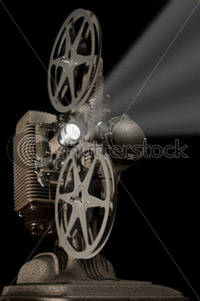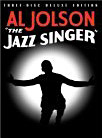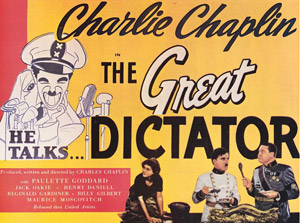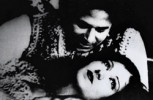Talkies
They give me the ‘feelies’!
 The first ever public projection of sound films took place in Paris in 1900. But it took three decades for talkies as we know them today to be released commercially. Sound for cinema was first recorded on a disc which was played at the same time as the film. This was known as sound-on-disc. Then in 1919 the sound-film synchronized print was created with the help of the sound-on-film technique. This became the mainstream cinematic technology.
The first ever public projection of sound films took place in Paris in 1900. But it took three decades for talkies as we know them today to be released commercially. Sound for cinema was first recorded on a disc which was played at the same time as the film. This was known as sound-on-disc. Then in 1919 the sound-film synchronized print was created with the help of the sound-on-film technique. This became the mainstream cinematic technology.
 The first feature-length talkie with dialogue was Warner Bros.’s The Jazz Singer.1 It was released on October 1927 and grossed over $ 2 million worldwide. But sound in cinema initially met with hostility – Charlie Chaplin maintained: “I shall never speak in a film. I hate the talkies and will not produce talking films…. My shadow appears on the screen as in a dream, and dreams do not speak.”
The first feature-length talkie with dialogue was Warner Bros.’s The Jazz Singer.1 It was released on October 1927 and grossed over $ 2 million worldwide. But sound in cinema initially met with hostility – Charlie Chaplin maintained: “I shall never speak in a film. I hate the talkies and will not produce talking films…. My shadow appears on the screen as in a dream, and dreams do not speak.”
Sound soon took its place as an integral part of cinema. Background music in feature films extended the effect of dialogues and conveyed the moods of characters and situations. New techniques were evolved such as sound-matching where the soundtrack does not change even as cinematic time and space do. This creates the effect of a ‘rush’ and indicates an acceleration of events. Another technique is sound-picture  counterpoint where sound is used at variance with image such as sad music in counterpoint to a happy scene to signify the imminent end of happiness.2
counterpoint where sound is used at variance with image such as sad music in counterpoint to a happy scene to signify the imminent end of happiness.2
Cinema was the iconic art form of the twentieth century and defined its cultural ethos of mass entertainment and the rise of the leisure industry. Films were regarded as ‘ready made entertainment’ where all one had to do was keep one’s eyes open. They were contrasted by purists with solitary pursuits such as reading which engaged the reader more actively. Talkies were contemptuously nicknamed “feelies”3 and likened to a sensorium engaging multiple senses at one time making its viewers passive and self-indulgent. Cinema, however, is a far more democratic art and entertainment form than reading. It is accessible across educational, racial, class and national barriers in a way that books can never be.
Hollywood has been criticized as an agent of consumer culture but it has also spread America’s democratic ethos to other countries. Its characters, for example, are far less marked by class than those in European films and have a democratic message embedded in their accent, attitude and body language, such as the gangster persona, for example..4 The fact that a gangster could occupy centrestage had a liberating effect on underprivileged youth all over the world. This is probably why the genre and actors like James Cagney attained cult status.5
The talkie seen in this perspective, far from rendering its viewers passive, engages them in a dynamic relationship. It awakens their desire, senses and passions to make them want more out of life. By spreading images, sounds and ideologies around the world with such immediacy, the talkie has played a potent role in forging links between different cultures and transforming the world into the global village it is today.
2 http://filmsound.org/india/
3 Aldoux Huxley, Brave New World, 1932
4 http://www.youtube.com/watch?v=3qshH9x1H2I&feature=related – James Cagney in The Roaring 20s.
5 http://rachelmacgregor.wordpress.com/portfolio/





